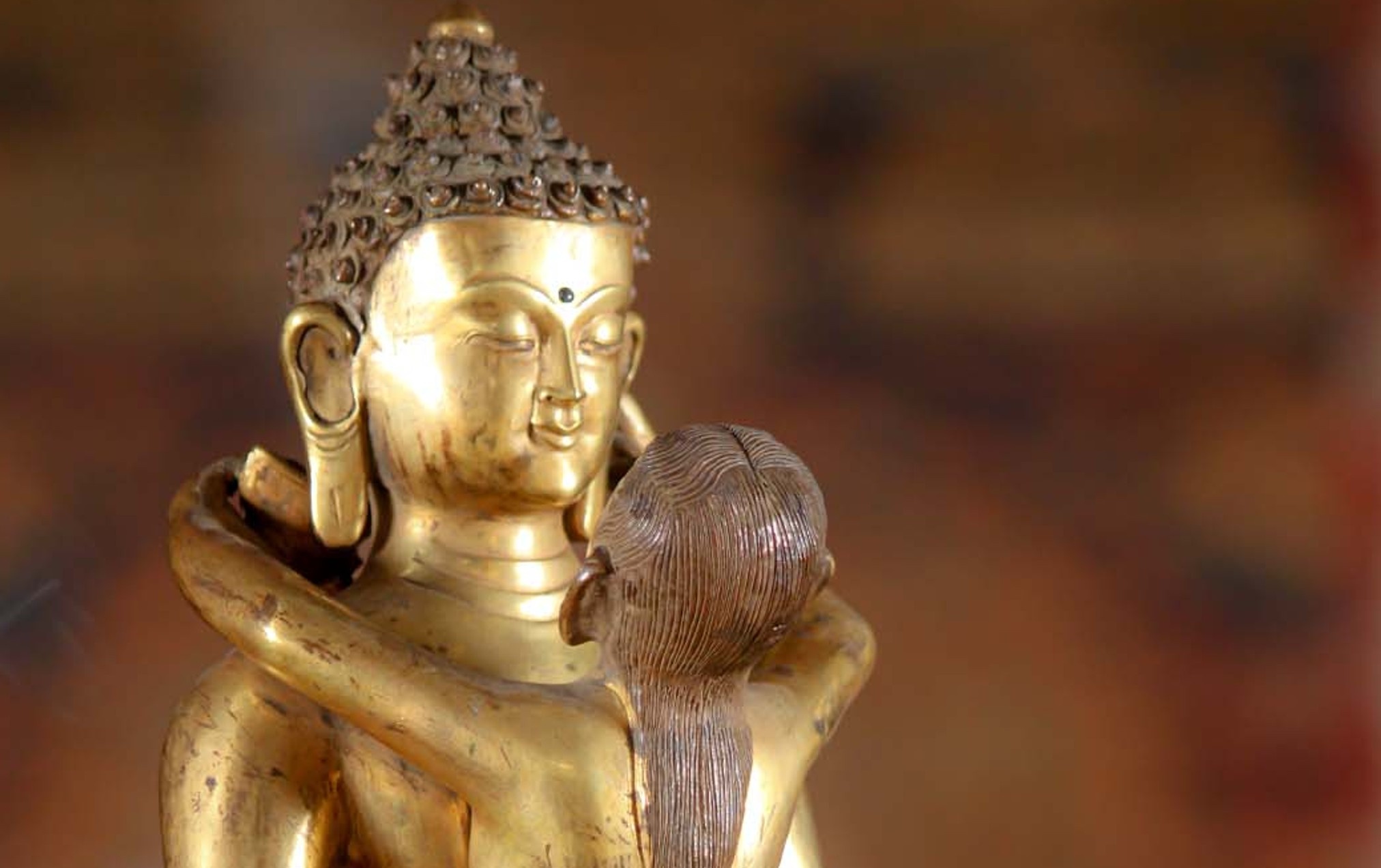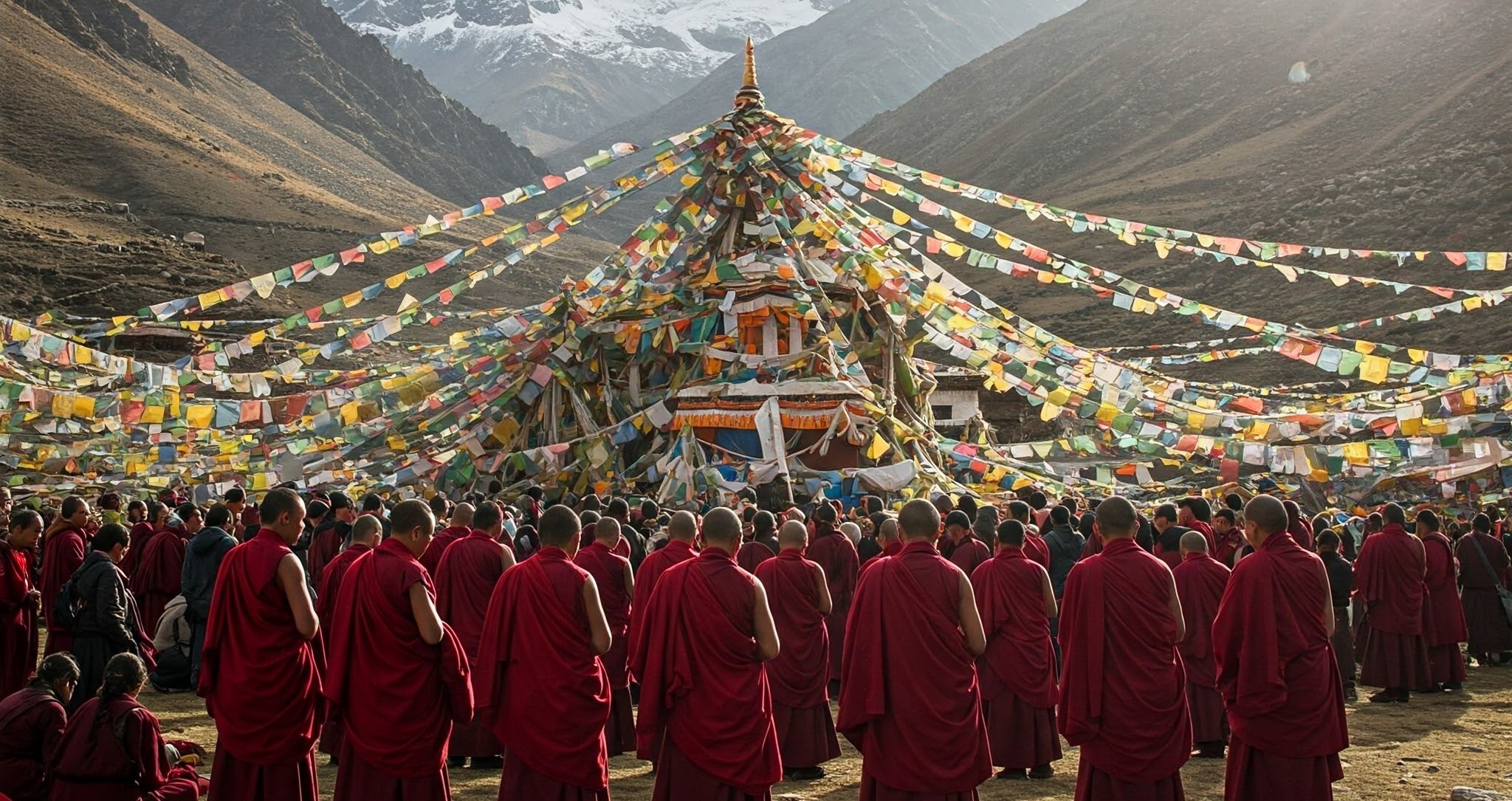When one looks at a Tibetan Yab-Yum image, the sight is immediately striking. Two divine figures sit in close embrace, perfectly balanced, radiating a sense of calm intensity. To someone unfamiliar with Buddhist art, it may look mysterious, even unusual. But to those who know its meaning, this image is a profound expression of spiritual truth — a symbol of the complete harmony between wisdom and compassion.
There is something deeply moving about stepping into a Tibetan monastery and seeing, right at the heart of its sacred space, a row of shining offering bowls. They are lined up neatly, often seven in number, each one holding water, flowers, rice, or other offerings. To an unknowing visitor, they might appear as simple vessels, yet their presence speaks volumes about Tibetan Buddhism’s understanding of generosity, respect, and the connection between the inner and outer worlds.
Picture this: You stand before the gates of a Tibetan monastery, embraced by the majestic silence of the mountains. The air carries the scent of incense, and whispered mantras accompany your first steps inward. Visiting a Tibetan monastery is far more than a trip or tourist experience—it’s an invitation to immerse yourself in a world where spirituality, compassion, and mindfulness permeate daily life.
Imagine holding a strand of beads that feels like an anchor, gently grounding your mind as your thoughts begin to slow, and your breath syncs with a sacred rhythm. This is the beauty of working with a mala—a tool that carries both spiritual power and personal presence.
Imagine yourself in the heart of Tibet, where the crisp mountain air carries the sound of prayer chants, the flutter of colorful prayer flags, and the deep resonance of ceremonial drums. Tibetan festivals are more than just celebrations; they are profound spiritual experiences that connect people to their faith, culture, and the cycles of nature. Rooted in Buddhism, these festivals offer a glimpse into a world where spirituality and daily life intertwine seamlessly.






